How To Grow Climbing Hydrangea For A Dash Of Elegant Drama In Your Garden
Climbing hydrangeas add stately elegance to any garden. They're a bit different than other hydrangeas, but just as lovely. Here's how to care for one yourself.
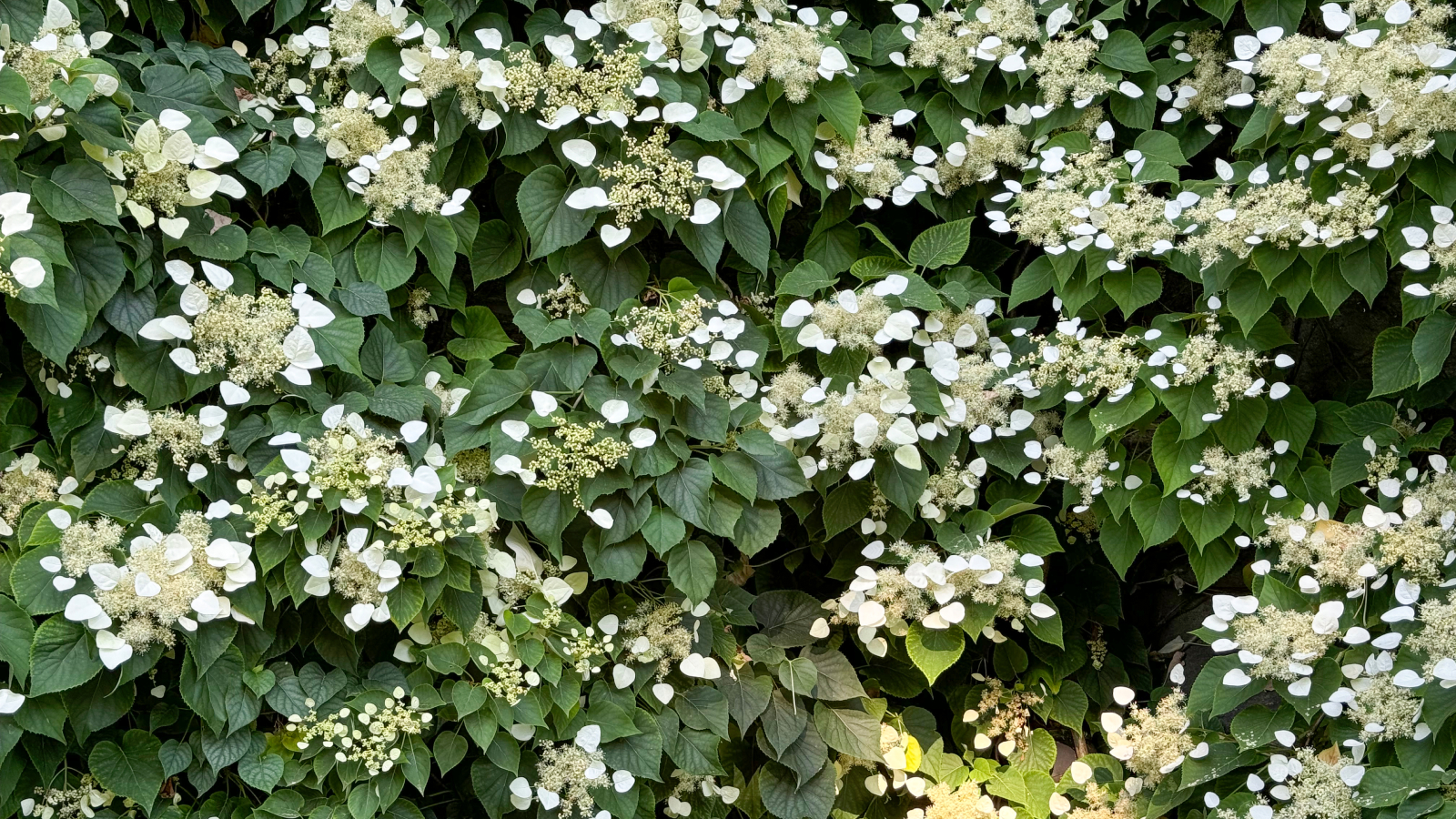

Quick Facts
Botanical name: Hydrangea anomala
Height: 30-50 feet (9-15 m)
Spread: 5-6 feet (1.5-1.8 m)
Sun exposure: Partial or full shade
Soil requirements: Rich, moist, well-drained
Hardiness zones: 4 to 8
When to plant: Spring
Climbing hydrangea is a gorgeous flowering vine that adds old-world elegance to any garden. Unlike other types of hydrangeas, it has a vining or trailing growth habit that allows for unique landscaping opportunities. You can grow it to cover walls, fences, trellises, and many other vertical surfaces.
In addition to its unusual growth habit, climbing hydrangea is known for its year-round interest. It has green foliage in spring, white lacecap flowers in summer, yellow foliage in fall, and shedding bark in winter. This makes it a wonderful addition to any landscape and the ideal plant for a four-season garden.
Even if you grow other hydrangea varieties, growing a climbing hydrangea is a bit different. Here’s everything you need to know to plant and care for this stunning flowering vine in your garden.
What Does a Climbing Hydrangea Look Like?
Climbing hydrangeas feature large, fragrant clusters of white flowers that bloom in late spring and summer against a backdrop of dark green, heart-shaped foliage. The flower clusters consist of a central mass of tiny, fertile flowers surrounded by a ring of larger, infertile flowers.
You can leave drying flower clusters on the vine after they bloom, and they will keep their shape and add interest, even after the foliage begins to fall. The fertile flowers may also produce seed pods for propagating, if desired.
These massive flowering vines readily climb columns, trees, and other supporting structures. A climbing hydrangea plant grows 30 to 80 feet (9-24 m) tall, but it tolerates pruning to shorter heights.
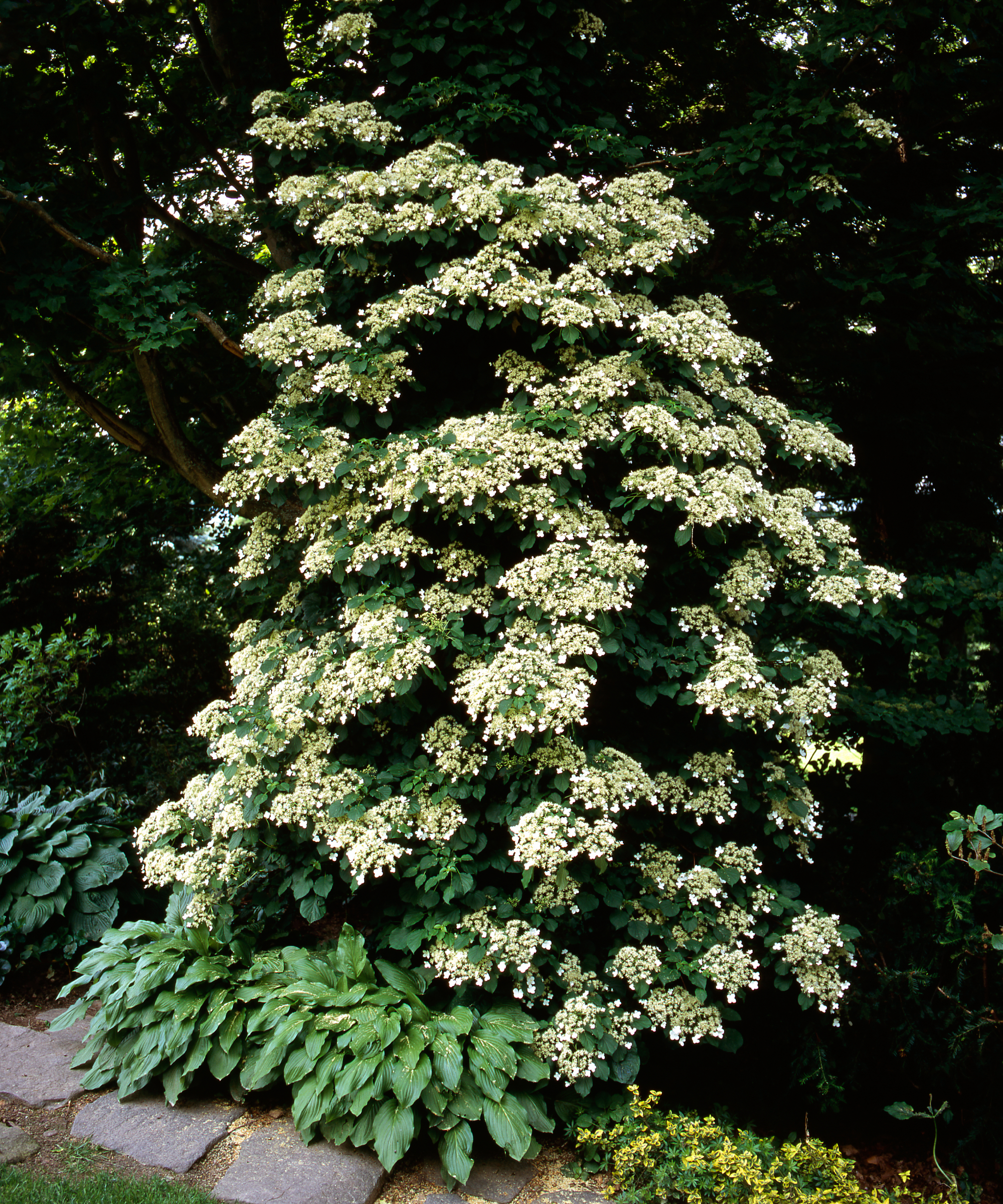
Climbing Hydrangea Care
Good hydrangea care, whether for climbing or shrub varieties, includes the right amount of light and water, adequate nutrients, and proper management of any problems that arise. Below are the basics you need to provide for your climbing hydrangea for a happy plant that will reward you with years of elegant white blooms.
Sign up for the Gardening Know How newsletter today and receive a free copy of our e-book "How to Grow Delicious Tomatoes".
Light
The climbing hydrangea grows well in many light conditions. It can even grow in deep shade, making it one of the best hydrangeas for shade, but partial or dappled sunlight is best. Afternoon shade is especially important in hotter climates.
Ideally, situate your climbing hydrangea in a location that receives 2 to 4 hours of morning sun, then spends the rest of the afternoon in dappled shade. When growing climbing hydrangeas against a wall, choose a northern or eastern exposure.
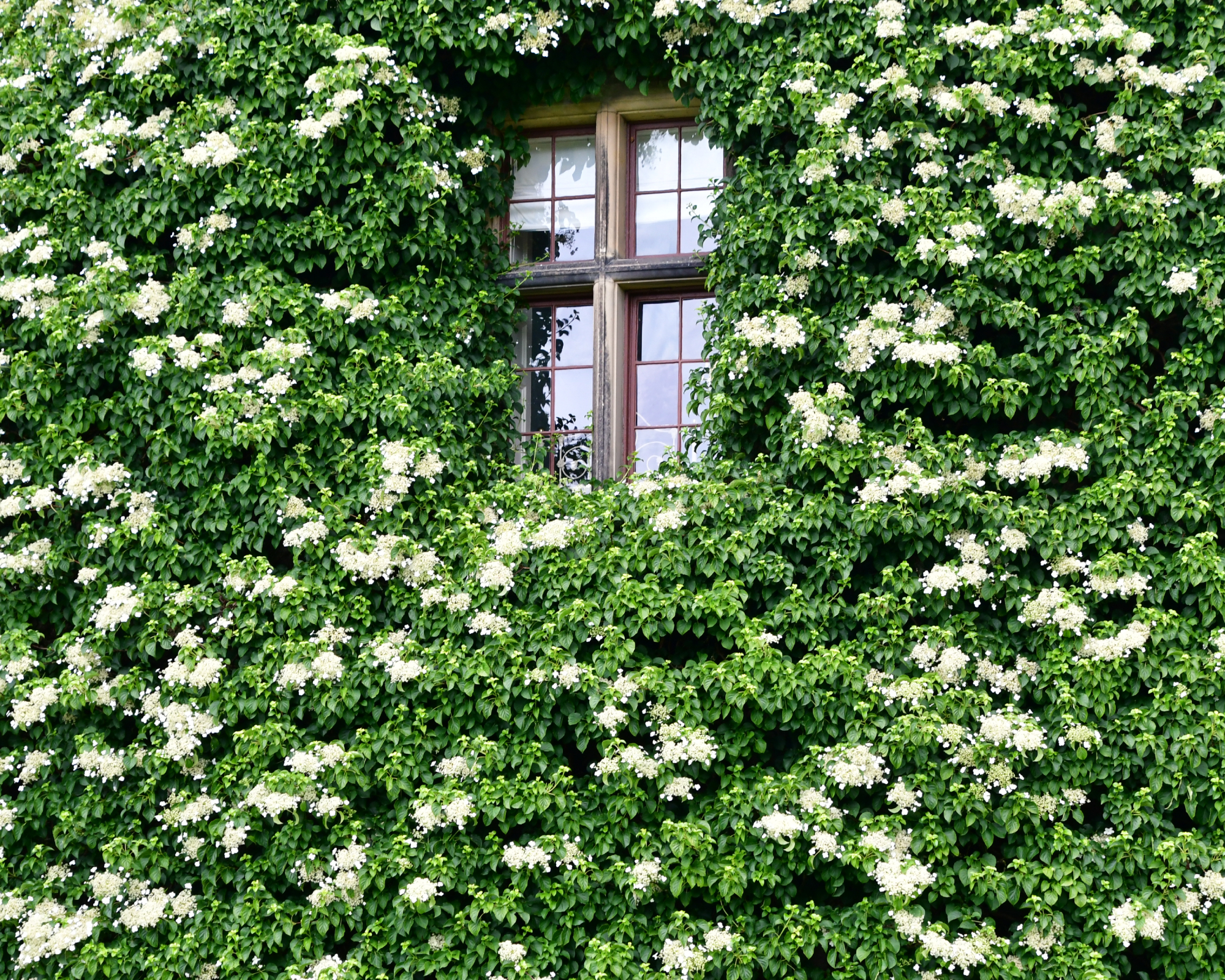
Water
Like other hydrangea varieties, the climbing hydrangea loves water. Hence the name “hydrangea,” which means water vessel. Learning how often to water hydrangeas is one of the most important parts of good hydrangea care.
Climbing hydrangea has medium water needs. The soil should remain consistently moist, but never soggy. Give your plant 1 inch (2.5 cm) of water at least once a week until it is established, or if you go more than a few weeks without rain.
Temperature & Humidity
The climbing hydrangea prefers temperate climates with mild humidity. It will not grow well in very hot or humid conditions. To flower, it needs at least six weeks of winter temperatures below 65 degrees Fahrenheit (18 C).
Climbing hydrangeas are hardy in USDA growing zones 4 to 8. It’s important to find the best hydrangea for your zone because planting in the wrong zone is one of the most common causes of a hydrangea not blooming, especially if you plant it in an area that’s too cold.
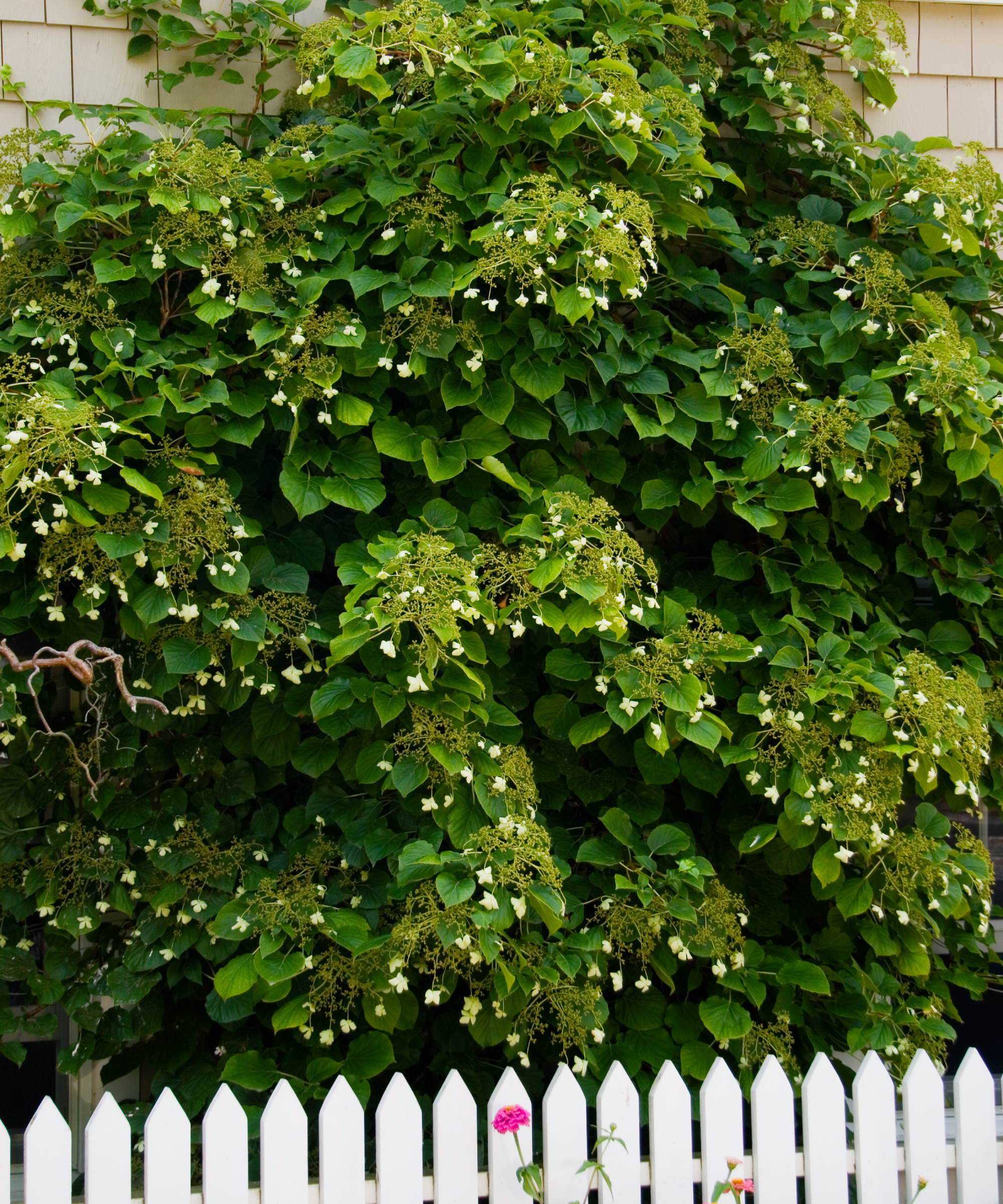
Soil
The best soil for climbing hydrangeas is fertile and moist but also well-drained. If you have poor soil, add compost before planting to enrich the nutrients in the soil and improve drainage.
If you don’t have any of your own homemade compost that’s ready to use yet, you can get a bag of Black Gold organic compost from Ace Hardware whenever you’re ready to plant. Use mulch around the base of your plant to keep moisture in the soil.
Fertilizer
Fertilizing hydrangeas isn’t really necessary if you have good soil, especially in the first few years of growing. As your climbing hydrangea matures—it will take several years before it really takes off—feed once per year in early spring with compost or a balanced organic fertilizer like this one from Espoma, which you can get at Ace Hardware.
Problems, Pests & Diseases
Climbing hydrangeas have few issues with pests and diseases, especially when healthy and grown in the right conditions. You might see mites, aphids, or scale, but these are often not a major issue. As with other varieties, a common hydrangea disease is powdery mildew. Avoid getting the leaves wet when watering to prevent this.
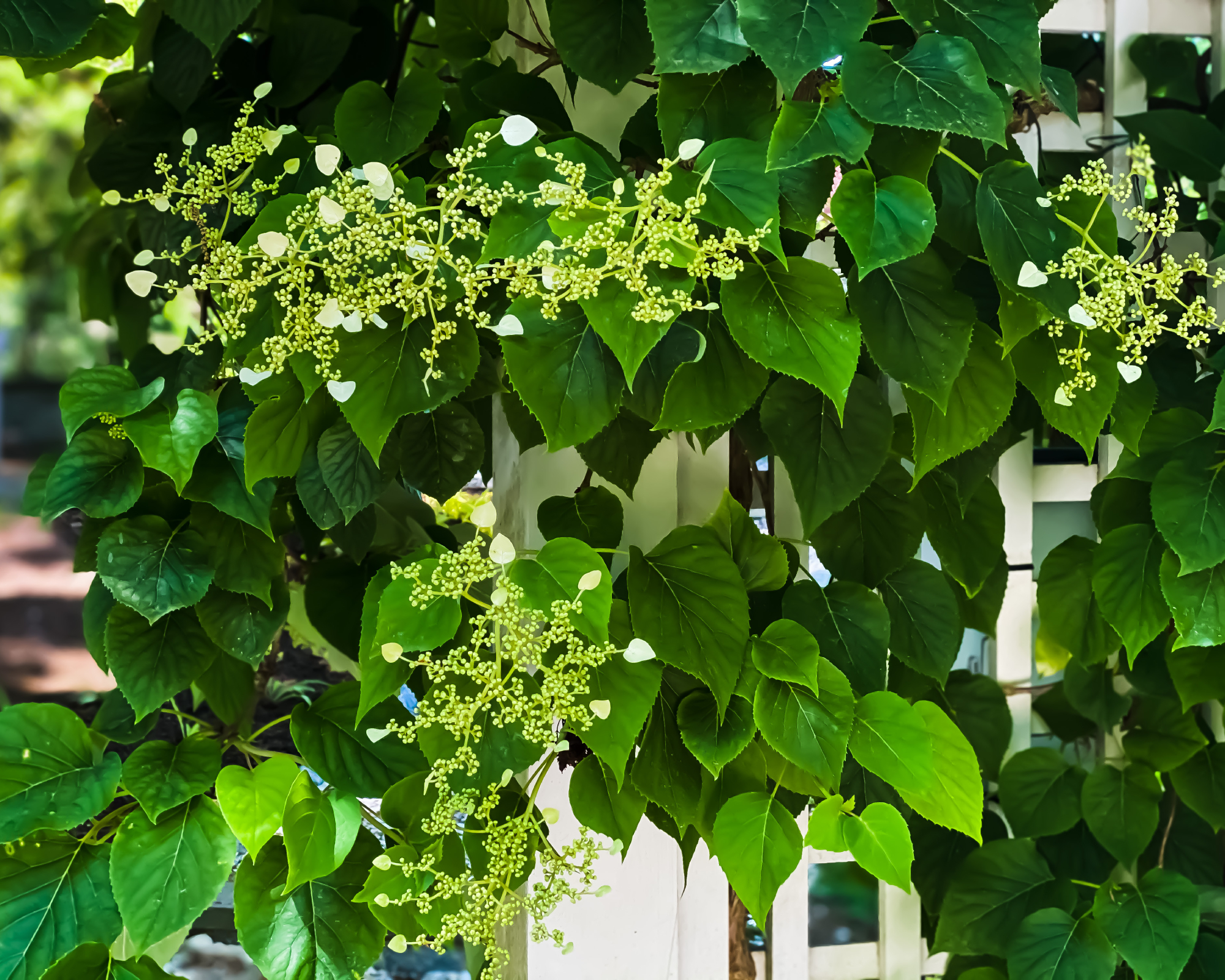
One issue you might face with a climbing hydrangea is the weight of the vine. Once you get a climbing hydrangea to climb, branches can become very heavy and break or damage structures. Be sure to provide your plant with a very sturdy, stable structure for support when planting.
Training
Climbing hydrangeas are large, heavy vines that need substantial support. A climbing hydrangea plant clings to the supporting structure by two methods: twining vines that wrap themselves around the structure and aerial roots that grow along the main stem cling to vertical surfaces.
To prevent any damage to your house or other permanent structures, install a trellis system before planting to allow the hydrangea’s aerial roots to cling to that instead. Without a supporting structure, climbing hydrangea plants form a mounding, arching shrub that grows to a height of 3 to 4 feet (0.9-1.2 m).
It is slow to establish, but later spreads at a rapid pace. The aerial rootlets that grow along the main stem will take root wherever they make contact with the soil. This potential to spread makes a climbing hydrangea plant an excellent choice as a flowering ground cover for a large area.
Pruning
Pruning is important for your climbing hydrangea. It can help prevent the issue of large, heavy vines that cause damage. Climbing hydrangeas initially grow slowly, so you don’t have to do a lot of pruning for the first few years. Focus on removing dead or damaged branches and suckers.
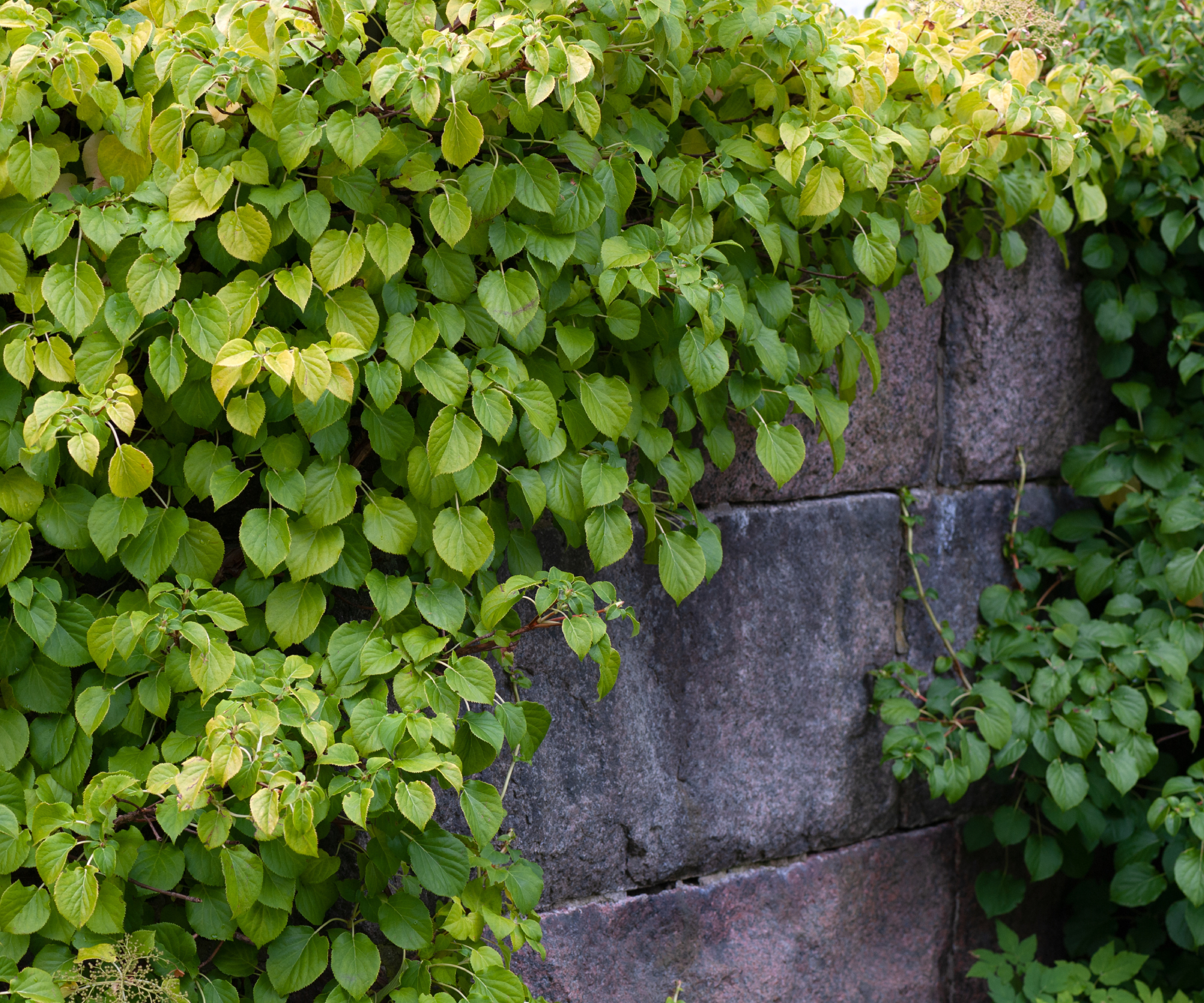
Prune your climbing hydrangea plant in late spring or early summer to remove dead, diseased or damaged branches. Remove crossing branches that rub against each other as rubbing creates an entry point for insects and disease.
Once the vines start growing more rapidly, you can prune climbing hydrangeas to maintain the size and shape you want. Do major pruning only in summer, just after blooming. This type of hydrangea blooms on last year’s branches, so never prune heavily in fall, winter, or spring or you risk cutting off flower buds and a climbing hydrangea that won’t bloom.
Propagation
You can propagate hydrangeas by stem cuttings. Take a healthy, green cutting that’s a few inches long and remove all but the top two leaves. Use a rooting hormone, like this one from Amazon, on the cut end and place it in moist potting mix. Keep the cutting moist and in a warm spot as it roots. You should be able to transplant it in 8 to 10 weeks.
Varieties
While climbing hydrangea is less common in gardens than other types of hydrangeas, you can still find a few different varieties. ‘Miranda’ is unique for its green and yellow variegated leaves, ‘Silver Lining’ has silvery-green variegated leaves, and ‘Firefly’ has green leaves with yellow margins.
Include one or more climbing hydrangeas for a stunning vertical display in your garden. Or get the classic look with a standard climbing hydrangea from the Gardening Know How Shop.
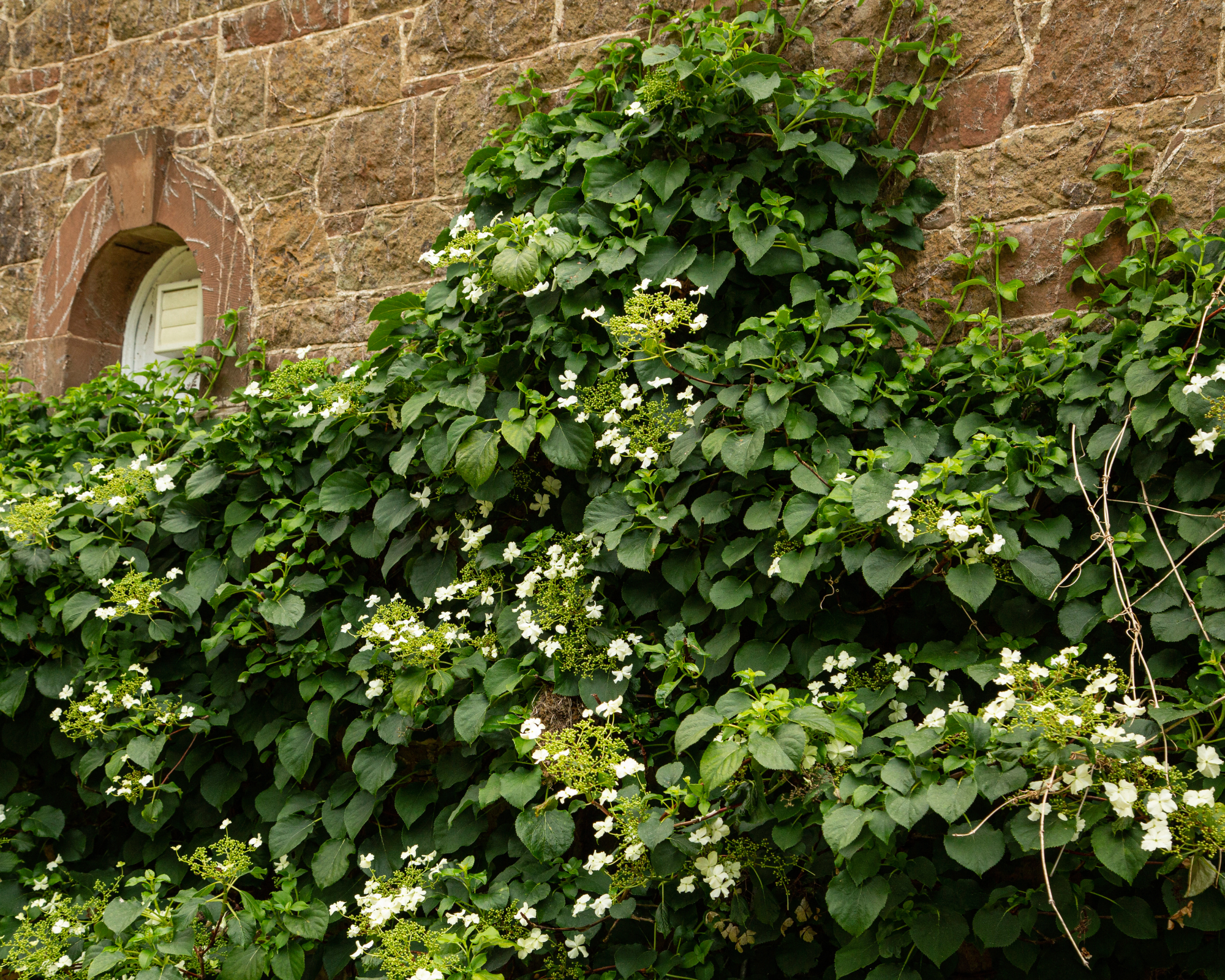
Frequently Asked Questions
Does Climbing Hydrangea Need a Trellis?
Climbing hydrangeas need some type of structure like a trellis to climb. Otherwise, they will trail over the ground. The structure should be sturdy, as the branches can become very heavy.
Where is the Best Place to Plant a Climbing Hydrangea?
The best place to plant a climbing hydrangea is in an area with moist but well-drained soil in partial or dappled shade and with a sturdy structure to support its vertical growth.
How Many Years Does it Take for a Climbing Hydrangea to Bloom?
Climbing hydrangeas are slow to establish. It can take anywhere from two to five years for a new plant to start flowering.
This article features products available from third party vendors on the Gardening Know How Shop. Keep in mind that our plant inventory is limited—so if you’re thinking of purchasing, don’t wait!

Mary Ellen Ellis has been gardening for over 20 years. With degrees in Chemistry and Biology, Mary Ellen's specialties are flowers, native plants, and herbs.
- Jackie CarrollWriter
- Laura WaltersContent Editor